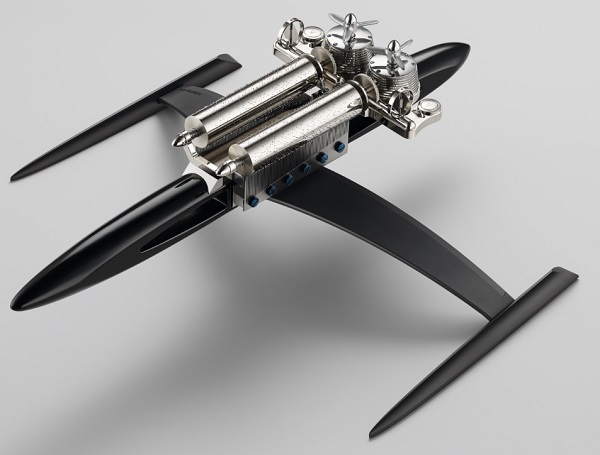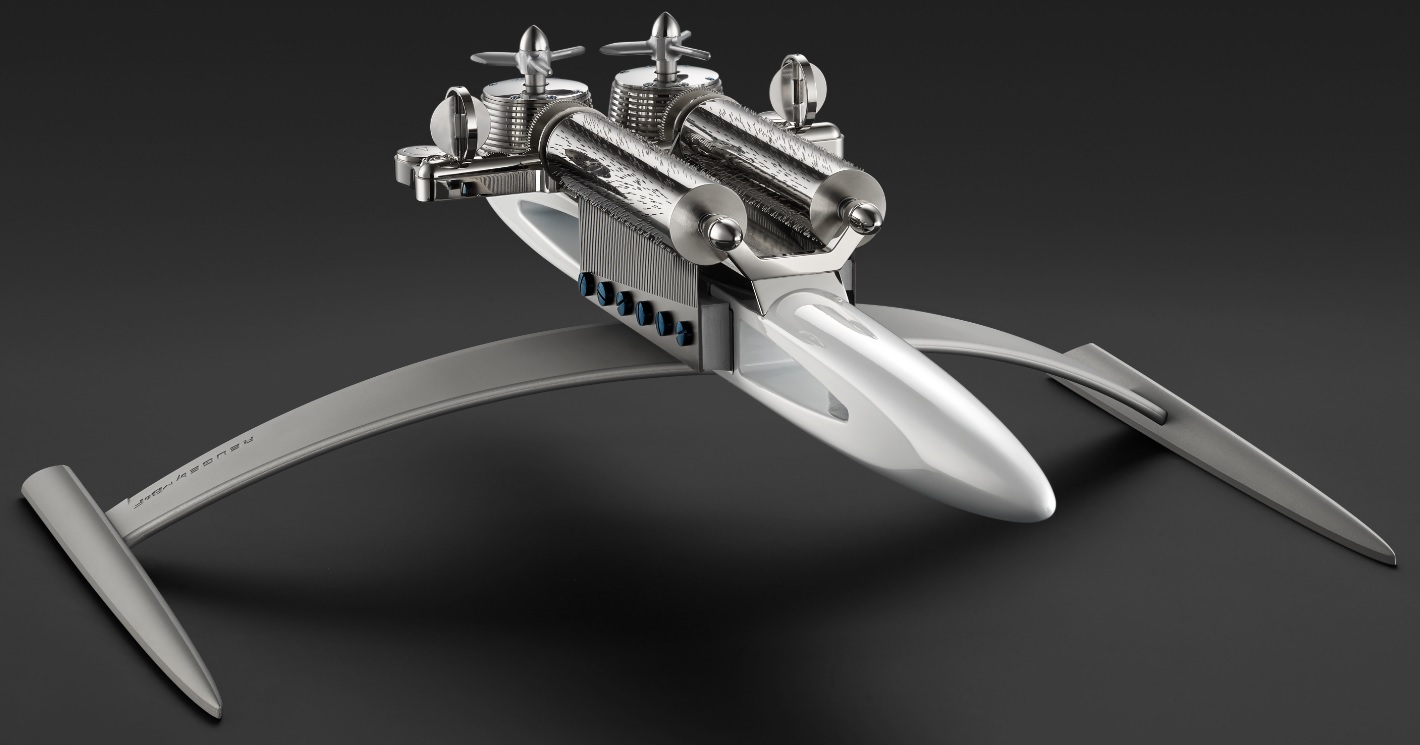
MB&F releases their first non time-telling creation with the MusicMachine music box style desk piece. Produced in partnership with Reuge, the last high-end music box maker in Switzerland, the MusicMachine is an auditory journey through the inspirations that MB&F founder Max Busser uses when conceiving MB&F watches. It isn’t a watch, but rather an item for the desk. The MusicMachine looks a lot like Romain Jerome’s Moon Dust DNA Spaceship pen with its “winged stand,” but this is something totally different.
A few years ago Busser would have no doubt been hesitant to release a non-watch item. However, with the success of the MB&F MAD Gallery and the sale of other types of mechanical art (in addition to horological machines), I think the limited edition MusicMachine will do quite well. It is much more fun than useful, but then again so are a lot of watches. MB&F quite meaningfully meant for the MusicMachine to look like a space ship, and the music box itself to look like an engine. The main body of the MusicMachine is in either white or black piano lacquered walnut wood. Why? For sound amplification purposes of course.
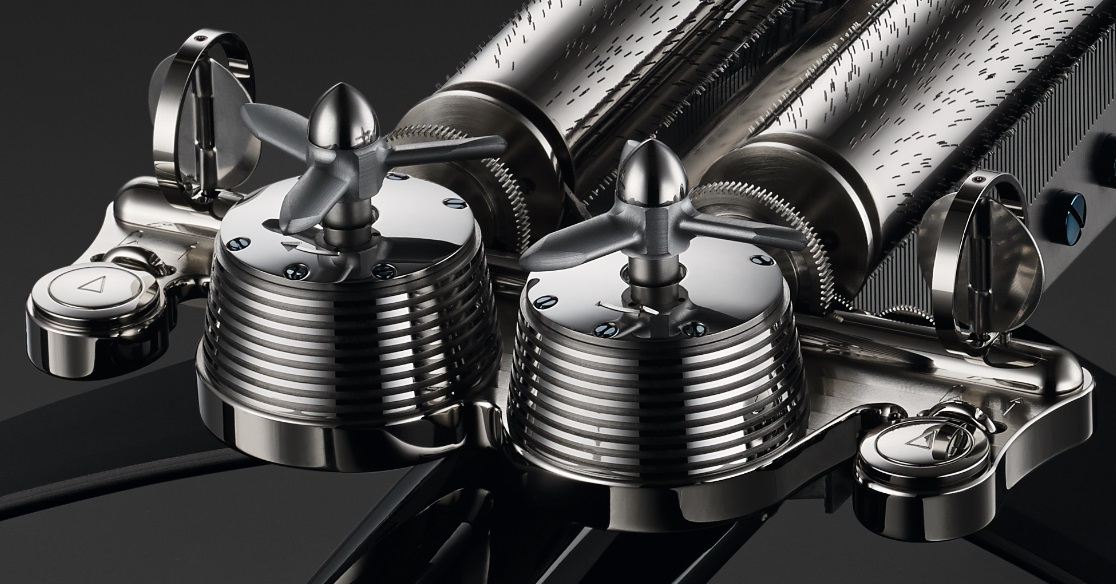
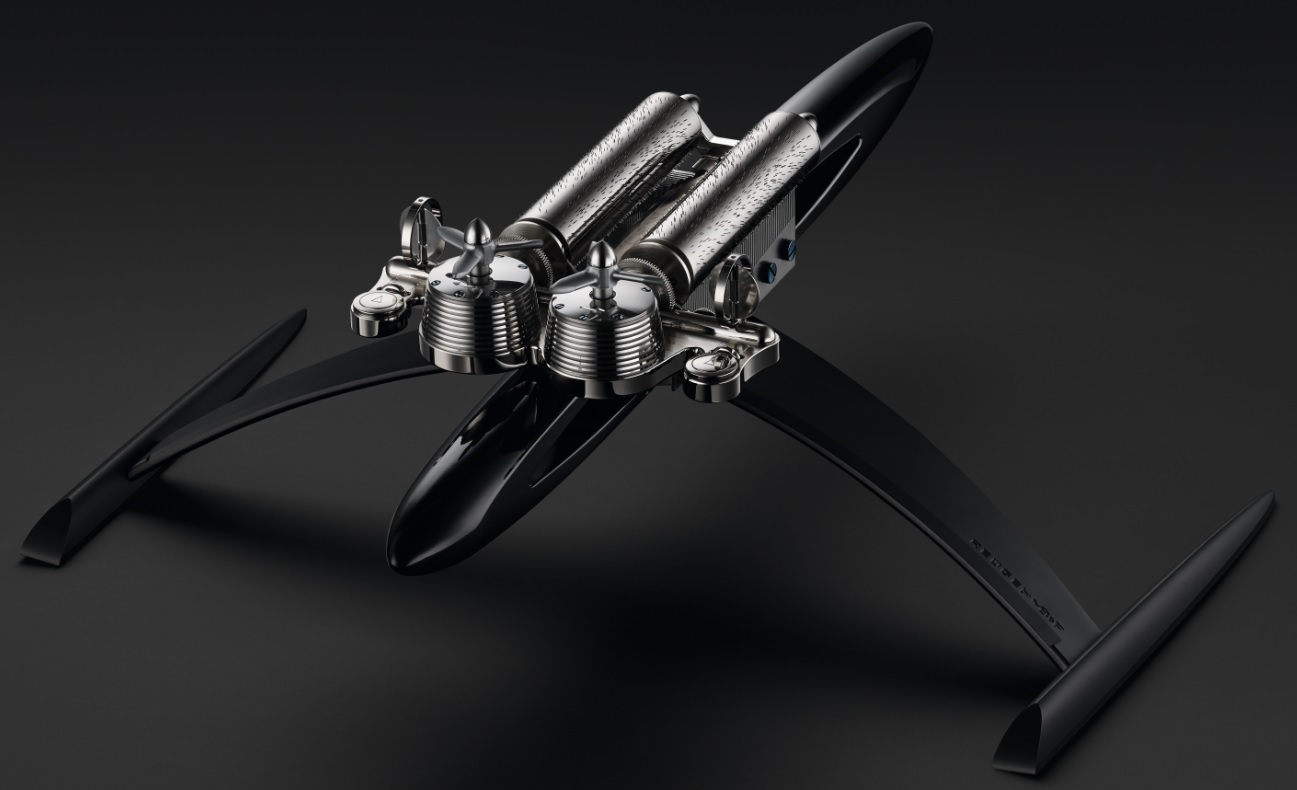
Propellers on each of the mainspring barrels serve as winding crowns for the music box, also powered by a spring, like a watch. Air regulators to each side spin as the box is activated. The movement’s main focal point are the music rollers with pins sitting over the combs which produce the sound. Each MusicMachine will come with pins for six melodies specifically select by Busser himself and are less than ironically selected segments from notable scores in Star Wars and Star Trek, as well as classic rock from John Lennon and Pink Floyd. Just what I always wanted, a totally music box version of Dark Side of the Moon.
Try turning this baby on when someone enters your office and playing a snippet of The Empire Strikes back. Even Darth Vader would be proud. In all its cheesiness, the aesthetic is totally MB&F, and the choice of music makes a lot more sense than Mozart and lullaby tunes on a device such as this. MB&F and Reuge will produce just 66 pieces total of the MusicMachine with 33 pieces in white and 33 pieces in black. Price is about 12,000 Swiss Francs mbandf.com reuge.com
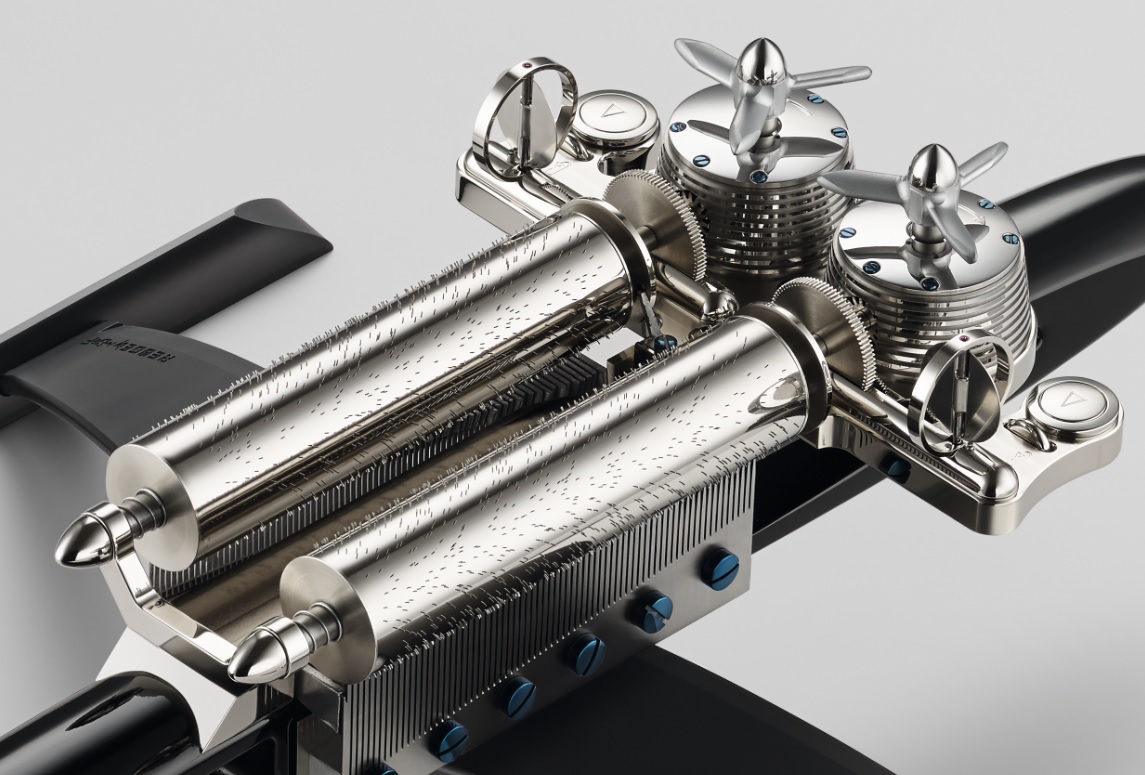
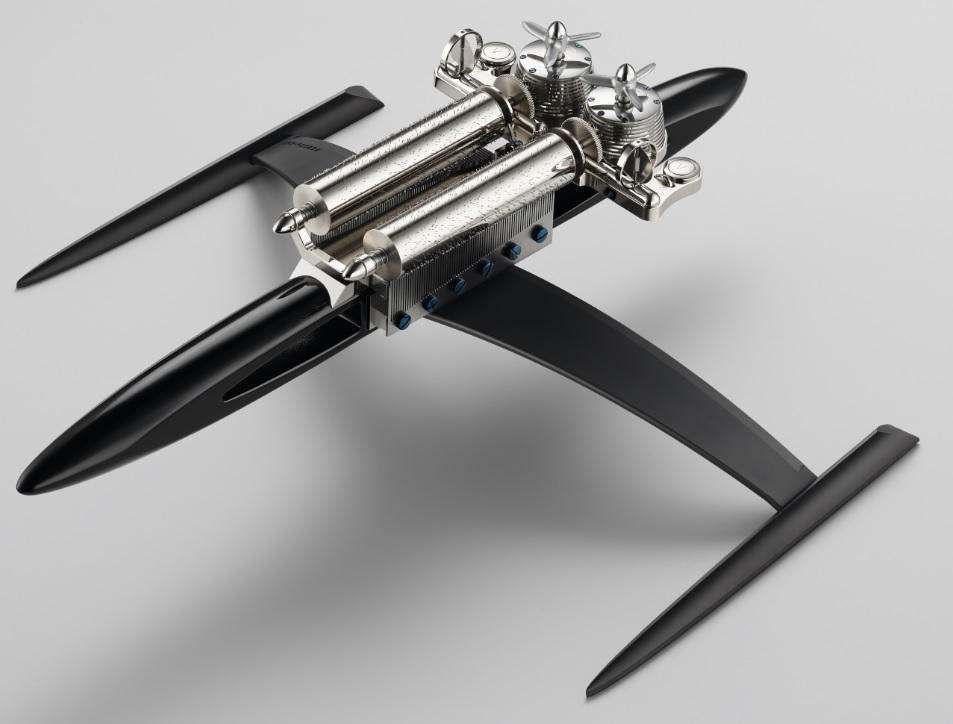
MusicMachine: Technical specifications
MusicMachine is a limited edition of 66 pieces: 33 pieces in white and 33 pieces in black.
Case and frame Main body: Walnut sound amplification chamber; white or black piano lacquered (white lacquer UV resistant)
Outriggers: Bead-blasted and anodised aluminium; black matte-anodised for black version Dimensions: 395mm wide x 475mm long x 165mm high; total weight: 2.97kg Acoustically-enhancing platform: white or black lacquered
Movement and finishing MusicMachine features two 3.72 movements (3 refers to number of melodies on each cylinder; 72 refers to number of notes on each comb); one movement is ‘right’ configured; one movement is ‘left’ configured (they rotate in opposite directions)
Mainplate: nickel-plated brass, decorated with Côtes de Genève. The mainplate holds both movements; each movement includes a mainspring, cylinder, comb and regulator
Mainsprings: Wound via propellers Barrels: Stainless steel; each with 6 heat-blued screws on top; grooved ‘piston’ sides Regulator: fan in stainless steel
Cylinders: brass Start/stop and continue functions Cylinder supports: Nickel-plated brass One melody = one revolution of the cylinder Three melodies per cylinder Length of each melody: 35 seconds Power reserve per cylinder: 15 minutes Pins hand-applied and hand-polished Length of pins: 1mm; diameter of pins: 0.3mm Pins per right cylinder: 1,279; pins per left cylinder: 1,399
Combs: steel alloy and lead; 72 teeth per comb; each comb attached to brass vibration plate by six heat-blued steel screws
Melodies Right cylinder – extracts from: ‘Another Brick in the Wall’ (1979) by Roger Waters and originally performed by Pink Floyd ‘Smoke on the Water’ (1973) written and originally performed by Deep Purple ‘Imagine’ (1971) written and originally performed by John Lennon Left cylinder – extracts from: ‘Star Wars’ (1977) main title by John Williams ‘Imperial March’ (1980) by John Williams ‘Star Trek’ (1979) main title by Jerry Goldsmith

